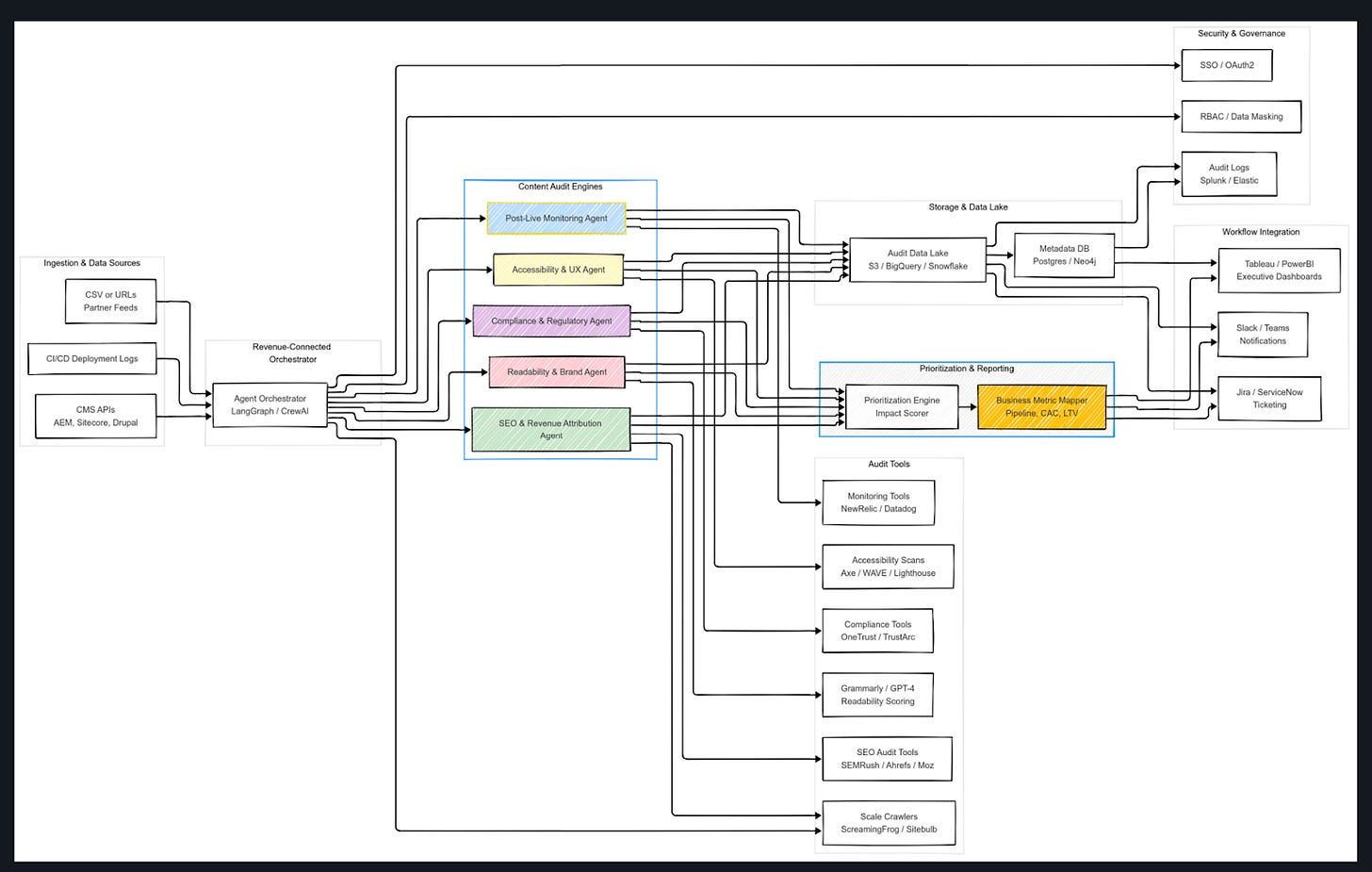How to Build an Agent Driven Content Audit System with LangGraph
How to Build an Agent-Driven Content Audit System with LangGraph
Are unnoticed flaws in your digital assets silently eroding your B2B revenue?
Your websites, landing pages, and digital content are critical revenue drivers.
But when mismanaged, they leak profits.
As content scales, manual audits fall short, inviting brand inconsistency and compliance risks.
Discover how AI Agents can streamline content audits across thousands of pages.
The Agent-Driven Content Audit System
Let me walk you through the high-level design.
The first step is content ingestion—gathering all URLs and asset metadata from various sources like crawler lists, CSVs, or CMS integrations. This ensures complete, real-time coverage across your content footprint.
Next, the orchestrator prioritizes assets using AI and historical data, focusing audits on high-impact pages first. This guarantees critical content gets the right attention every time.
Multiple audit engines then run in parallel: checking readability, SEO, accessibility, compliance, and post-launch monitoring. They use both third-party tools and custom code for thorough reviews.
All results feed into secure databases that connect content to revenue and risk metrics. Finally, the prioritization engine turns data into business impact scores, triggering automated tickets and alerts so stakeholders can make fast, informed decisions.
I’ve done full walk-through of the code in this video.


